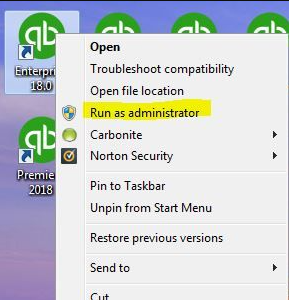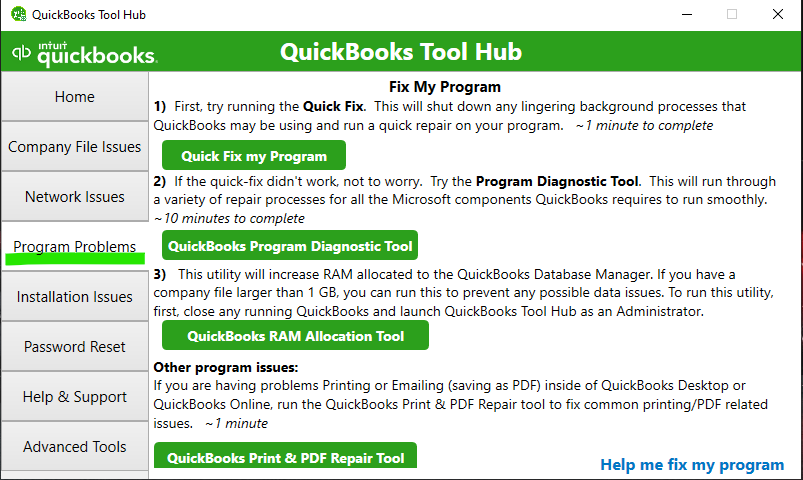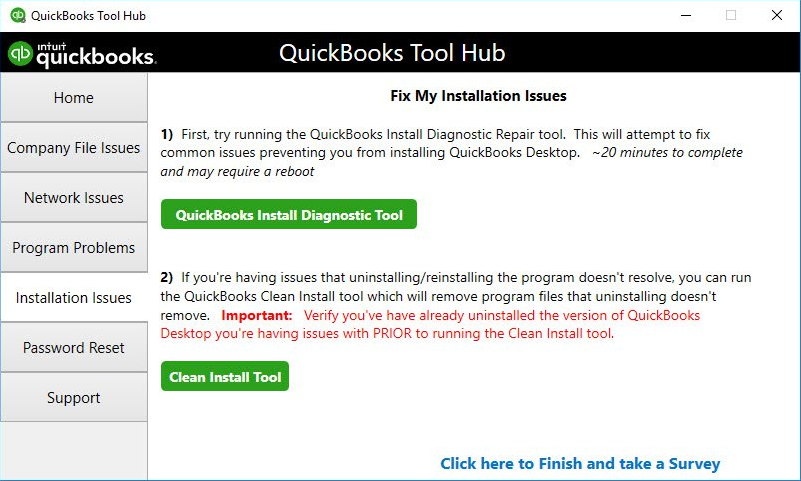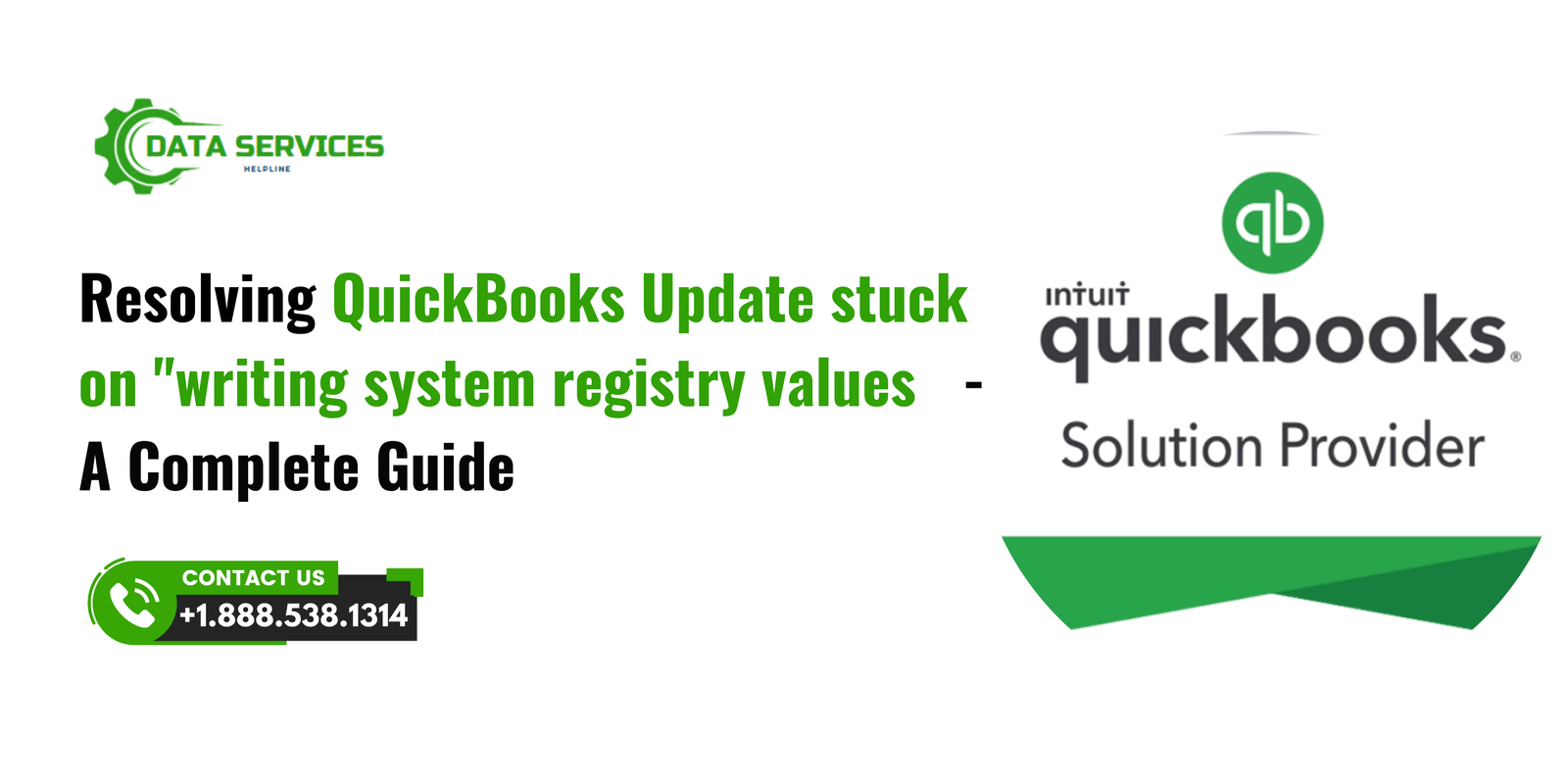QuickBooks is a crucial accounting tool that allows businesses to manage their finances efficiently. To enhance performance, fix bugs, and introduce new features, Intuit regularly releases updates for QuickBooks. These updates help improve compatibility with the latest Windows versions and security patches. However, some users encounter an issue where the QuickBooks update process gets stuck on “Writing System Registry Values.” This prevents the update from completing and can disrupt business operations.This error usually occurs when QuickBooks fails to modify the Windows registry, which is necessary for integrating updates into the operating system. The Windows registry stores crucial system settings, and if QuickBooks cannot access or modify these entries, the update may freeze or fail. As a result, users may be unable to use QuickBooks properly until the issue is resolved.
Several factors can contribute to this issue, including insufficient user permissions, conflicts with security software, outdated system settings, or corrupted registry files. If an antivirus or firewall is blocking QuickBooks from making registry changes, the update may get stuck indefinitely. Additionally, an incomplete or damaged update file can also cause this problem, preventing QuickBooks from finalizing the installation.Another common reason for this issue is background processes interfering with the update. Other applications running in the background, such as third-party security programs, Windows updates, or pending installations, can conflict with QuickBooks and cause the update to stall. Additionally, low system resources or insufficient disk space may slow down the update process, causing it to appear stuck at “Writing System Registry Values.”
What Does “Writing System Registry Values” Mean in QuickBooks Updates?
During a QuickBooks update, the software makes critical changes to system files and registry entries to ensure smooth operation and compatibility with your Windows operating system. The Windows registry is a database that stores system settings, application configurations, and important files that allow programs like QuickBooks to function properly.
When you see the message “Writing System Registry Values” during an update, it means that QuickBooks is attempting to update or modify these registry entries. This step is crucial for the software to integrate new features, security patches, and bug fixes. Without updating the registry values, QuickBooks may not run efficiently or may experience compatibility issues with the latest Windows updates.
However, if the process gets stuck at this stage, it indicates that QuickBooks is unable to complete the modification of registry values. This can happen due to various reasons, such as:
- Insufficient Administrative Privileges – QuickBooks may not have the necessary permissions to access or modify system registry files.
- Antivirus or Firewall Restrictions – Security programs may block QuickBooks from making changes to the registry.
- Corrupt or Incomplete Update Files – A damaged QuickBooks update file can prevent the process from finishing.
- Windows Registry Errors – Pre-existing issues in the registry may interfere with the update process.
- Conflicting Background Applications – Other software running in the background can interfere with QuickBooks updates.
If this process stalls, the update remains incomplete, potentially causing performance issues, errors, or even software crashes. To prevent this, it is essential to ensure QuickBooks has administrator access, disable interfering security software temporarily, and repair any registry issues before running the update again.
Common Causes of the Update Issue
1. Insufficient User Permissions
QuickBooks requires administrative privileges to write to the system registry. If the user account lacks sufficient permissions, the update process may halt.
2. Corrupted QuickBooks Installation
A damaged or incomplete QuickBooks installation can prevent updates from proceeding smoothly.
3. Conflicts with Antivirus or Firewall Settings
Overprotective antivirus software or improperly configured firewall settings can block QuickBooks from accessing or modifying registry values.
4. Registry Issues in Windows
If the Windows registry itself is corrupted or improperly configured, QuickBooks may fail to write the necessary updates.
5. Network or Internet Connectivity Issues
An unstable or slow internet connection can disrupt the update process, causing it to stall.
6. Large Update Files
If the update file is large or contains many modifications, the system might struggle to process all changes at once.
Steps to Fix QuickBooks Update Stuck on “Writing System Registry Values”
Step 1: Run QuickBooks as Administrator
Ensure that QuickBooks has the necessary permissions to access system files:
- Close QuickBooks if it is open.
- Right-click the QuickBooks icon on your desktop.
- Select Run as Administrator.
- Retry the update process.

Step 2: Disable Antivirus and Firewall Temporarily
- Open your antivirus software and disable real-time protection temporarily.
- Go to the Windows Firewall settings and turn it off temporarily.
- Retry the update in QuickBooks.
- Once the update is complete, re-enable your antivirus and firewall for security.
Step 3: Use QuickBooks Tool Hub
QuickBooks Tool Hub is a powerful utility provided by Intuit to resolve common errors:
- Download the latest version of QuickBooks Tool Hub from the official website.
- Install and open the tool.
- Navigate to the Program Problems tab.
- Run the Quick Fix my Program tool.
- Restart your computer and try updating QuickBooks again.

Step 4: Repair QuickBooks Installation
- Open the Control Panel.
- Select Programs and Features.
- Find QuickBooks in the list, right-click it, and choose Repair.
- Follow the on-screen instructions to repair the software.
- Restart your computer and retry the update.
Step 5: Edit Windows Registry
Caution: Editing the Windows registry can be risky. Proceed with care or consult an IT professional.
- Press Windows + R to open the Run dialog box.
- Type regedit and press Enter.
- Backup your registry by selecting File > Export and saving the file.
- Locate the registry keys associated with QuickBooks and delete any invalid or corrupted entries.
- Close the Registry Editor and restart your computer.
Step 6: Ensure Stable Internet Connection
- Test your internet speed using an online speed test.
- Switch to a wired connection if you’re on Wi-Fi.
- Restart your router to ensure stable connectivity.
Step 7: Perform a Clean Install of QuickBooks
If all else fails, perform a clean installation:
- Uninstall QuickBooks via the Control Panel.
- Use the QuickBooks Clean Install Tool from QuickBooks Tool Hub.
- Download the latest version of QuickBooks from the official website and reinstall it.
- Retry the update process.

Preventative Measures to Avoid Update Issues
Ensuring that QuickBooks updates install smoothly is essential for maintaining software performance and preventing unexpected errors. Many update issues arise due to system conflicts, outdated configurations, or network-related problems. Implementing the following preventative measures can help users avoid disruptions and ensure QuickBooks updates run without issues.
1. Regularly Update QuickBooks
One of the best ways to prevent update-related errors is to keep QuickBooks updated. Installing updates as soon as they are released ensures that security patches, bug fixes, and performance enhancements are applied in a timely manner. Delaying updates can lead to cumulative update issues, where outdated files conflict with new updates, causing installation failures.
2. Maintain a Clean Registry
The Windows registry stores critical information about installed applications, including QuickBooks. Over time, invalid or corrupt registry entries can cause update failures. Using tools like CCleaner or built-in Windows utilities to clean the registry can help prevent errors. However, modifying the registry manually should be done with caution, as incorrect changes can lead to system instability.
3. Backup Data and Registry
Before performing any QuickBooks update, it is essential to back up company files and system registry settings. This ensures that users can restore their data in case an update fails or causes unexpected issues. QuickBooks provides a built-in backup feature, and users can also create a system restore point to protect registry settings.
4. Keep Your System Updated
Windows updates often include important fixes that improve software compatibility. Running outdated versions of Windows can cause conflicts with QuickBooks updates. Ensuring that the operating system, drivers, and .NET Framework components are up to date can prevent errors related to outdated system files.
5. Review Firewall and Antivirus Settings
Security programs such as firewalls and antivirus software can sometimes block QuickBooks updates by mistakenly identifying them as threats. To prevent this, users should whitelist QuickBooks and its processes in their security settings. This ensures that essential update files are not blocked or quarantined, allowing the update process to complete successfully.
6. Monitor Internet Connection
A stable and reliable internet connection is essential for downloading and installing QuickBooks updates. Slow or unstable networks can cause partial downloads, leading to corrupt update files. Using a wired connection instead of Wi-Fi and avoiding network-heavy activities during updates can help ensure a smooth process.
By following these preventative measures, users can significantly reduce the chances of encountering update issues in QuickBooks, ensuring smooth software performance and uninterrupted business operations.
Conclusion
The issue of QuickBooks update getting stuck on “writing system registry values” can disrupt your workflow, but with the right approach, it’s fixable. By understanding the causes and following the outlined solutions, you can resolve the issue efficiently. Remember to implement preventative measures to avoid future complications. Regular maintenance of your system and QuickBooks software is key to a seamless experience.
Read More: QBCFMonitorService Not Running on This Computer
FAQs
QuickBooks updates system registry values to integrate seamlessly with Windows, ensuring compatibility and functionality after an update.
Yes, temporarily disabling antivirus software can help resolve update issues. Ensure you re-enable it after the update for security.
If the QuickBooks Tool Hub doesn’t fix the problem, try repairing or reinstalling QuickBooks or editing the Windows registry with caution.
es, you can download the latest updates from the official QuickBooks website and manually apply them to bypass the automatic update process.
Visit the Data Service Helpline website and use their support page to access chat, email, or phone support options.
